Anyone who has a garden has likely heard of mulch. It’s one of the building blocks of a healthy garden and there’s an almost infinite number of things that can be labeled as mulch, particularly organic mulch.
Organic mulches are natural ground covers made from plant-based or animal-based materials. But their benefits go beyond simple weed control and moisture retention. Organic mulches also stimulate microbes, improve soil structure, and release nutrients into the soil as they decompose (unlike inorganic mulches such as rubber or pea gravel, which are mainly used to cover the ground or beautify a landscape).
If your head is spinning from all the options out there, I’m breaking down my 12 favorite organic mulches to use in vegetable gardens, flower beds, and landscapes (some of which might even be freely available in your own yard).
Disclosure: If you shop from my article or make a purchase through one of my links, I may receive commissions on some of the products I recommend.
Quick tip
To extract the most benefits for your yard, make sure you’re using not only the right kind of mulch, but that you’re using mulches correctly.
Compost
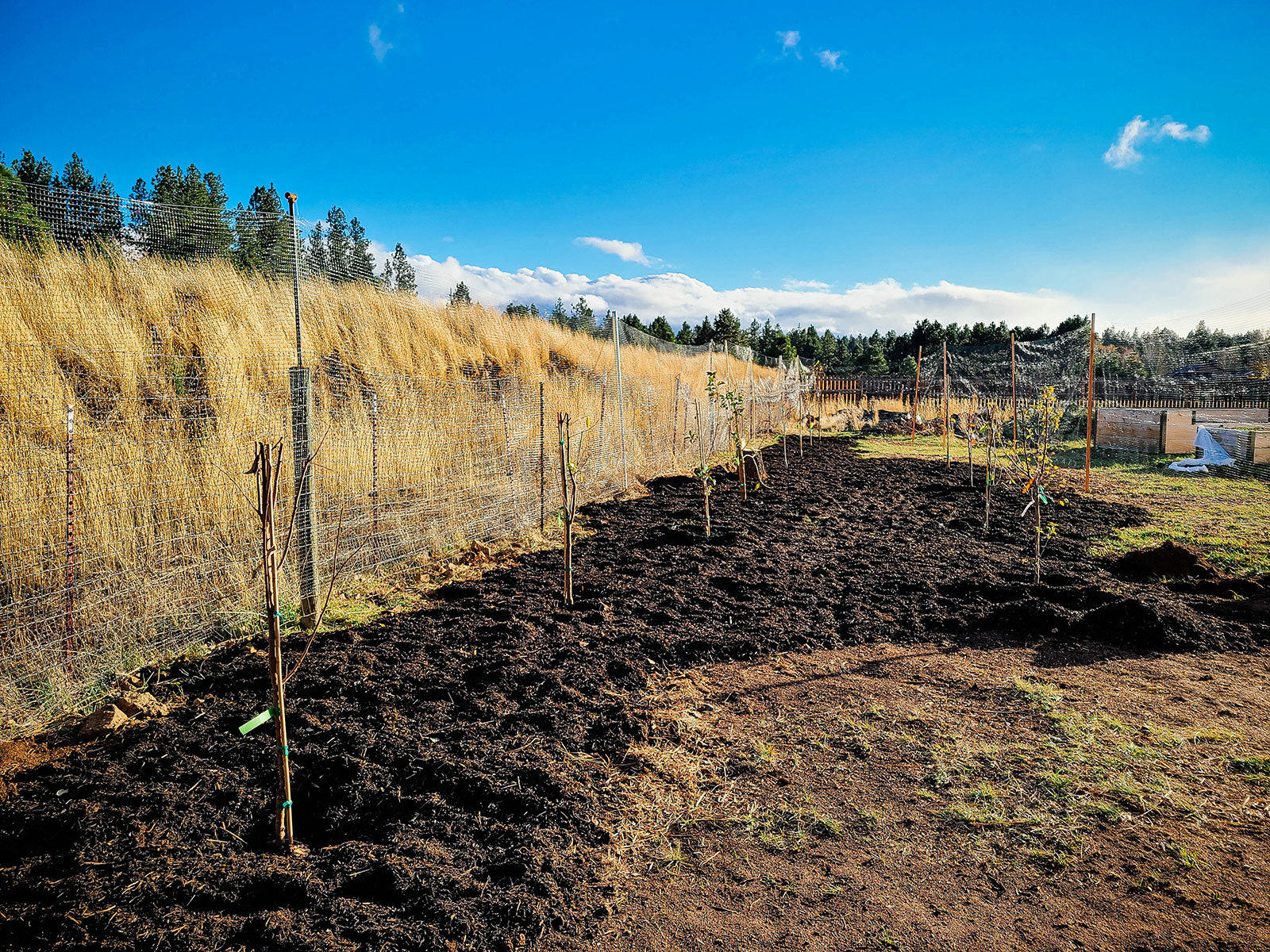
Got a compost pile? Awesome, you’ve got mulch!
I know compost is usually used as a soil amendment, but if you have some left over, think about it: it’s free, it has loads of nutrients, and it’s full of beneficial microorganisms, worms, and other natural decomposers. You can use compost as is; no need to add another mulch layer over it.
If you have a large area to cover, buying compost in bulk is a great way to feed and protect the soil at the same time.
When I planted my fruit orchard in fall a few years ago (seen in the image above), I spread several inches of forest-based mulch around my trees to “tuck them in bed” for the winter ahead. The steaming compost kept the young root systems warm and enriched the soil as it worked its way down.
Caution
Organic mulches sometimes come with surprises—like weed seeds, mushroom spores, or, unfortunately, pesticides and other toxins. Be sure to source your organic mulch from a reputable supplier to avoid introducing weeds and other unwanted elements into your garden.
You can also make your own leaf compost (known as leaf mold) if you have huge piles of fallen leaves every year. But they don’t have to be decomposed before you can use them as a mulch (see the next section below).
Leaf litter
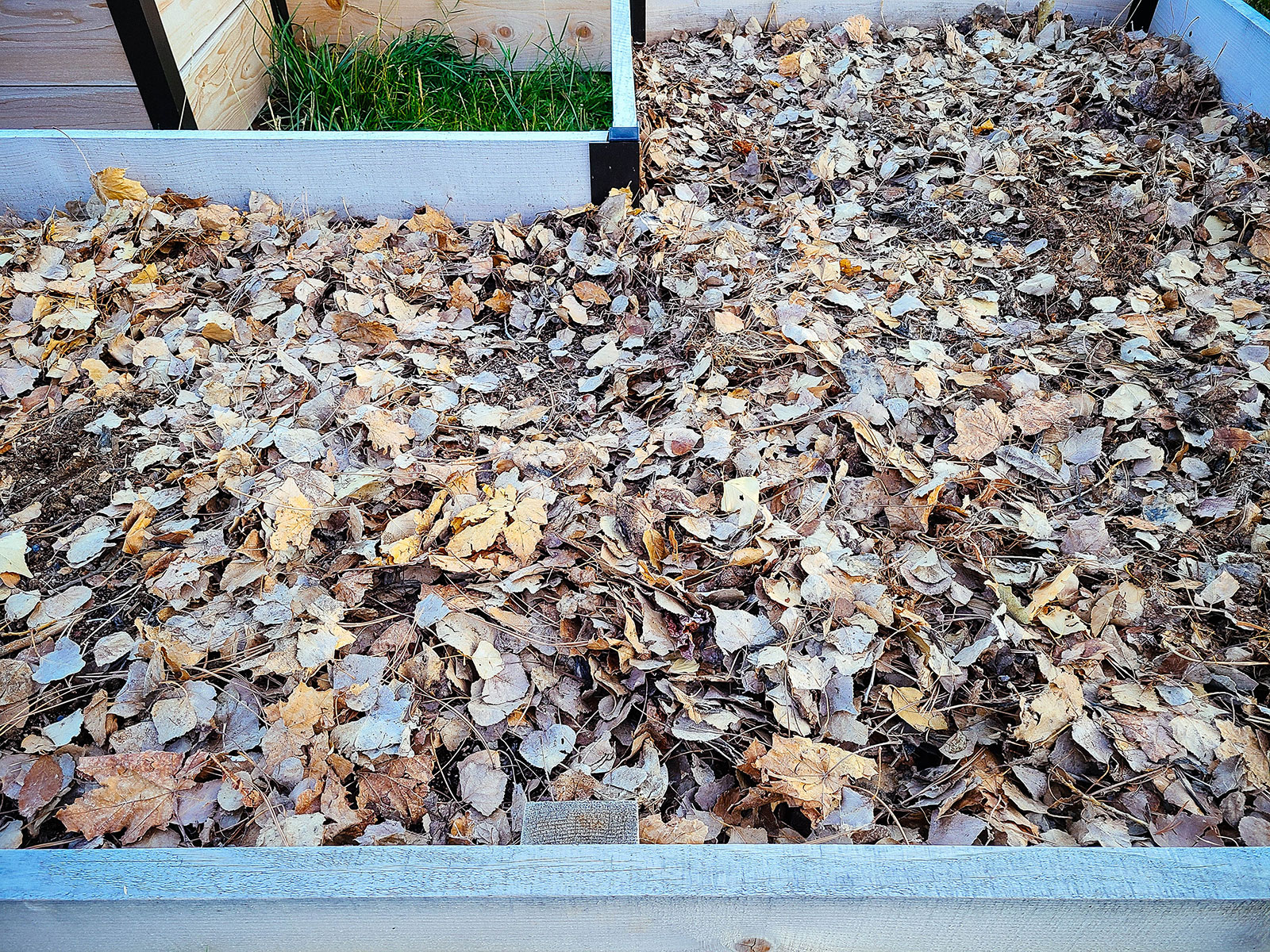
If you’ve got trees in your yard, don’t discard the leaves after you rake them up in fall.
Chop them up (with a string trimmer) or shred them into little pieces (with a lawn mower or an electric leaf mulcher) and scatter them over the soil. If your leaves are on the small side (like those from aspen trees), you can even leave them whole.
Smaller bits of leaves break down faster and are less likely to mat than larger whole leaves (such as those from maples or oaks). To aerate large leaves, you can mix them with pine needles or grass clippings so they don’t clump together. (Making a “salad mix” like this also benefits the soil by providing different types of nutrients.)
Here are other ways you can use fall leaves to improve your garden soil.
Mushroom compost
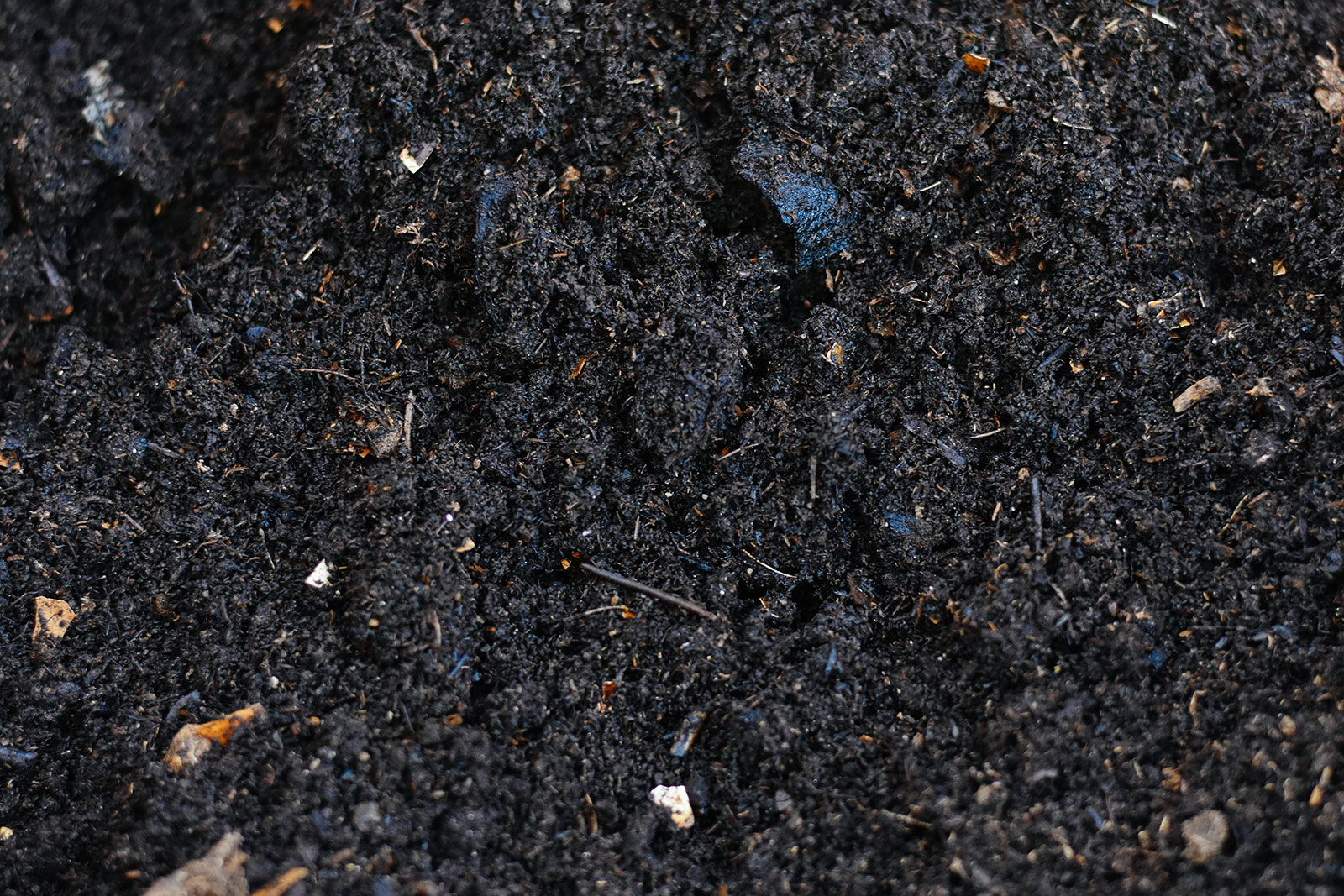
A by-product of mushroom farming that’s sold to the public in some places, mushroom compost makes for great mulch. It’s high in calcium and other nutrients, improves water retention, and attracts earthworms.
Sometimes known as spent mushroom compost (referring to its use as a media for mushroom growing), it usually contains a good amount of chalk (up to 30 percent) because the “bed” that the mushrooms were grown on is encased in chalk. This could make certain kinds of mushroom compost more on the alkaline side of things, though it generally has a neutral pH that’s suitable for most plants.
The downside? Mushroom compost may have high levels of salt, so I recommend using it in a garden bed where any excess salt will be diluted by the existing soil. (Try to avoid using mushroom compost for potted plants.)
Straw
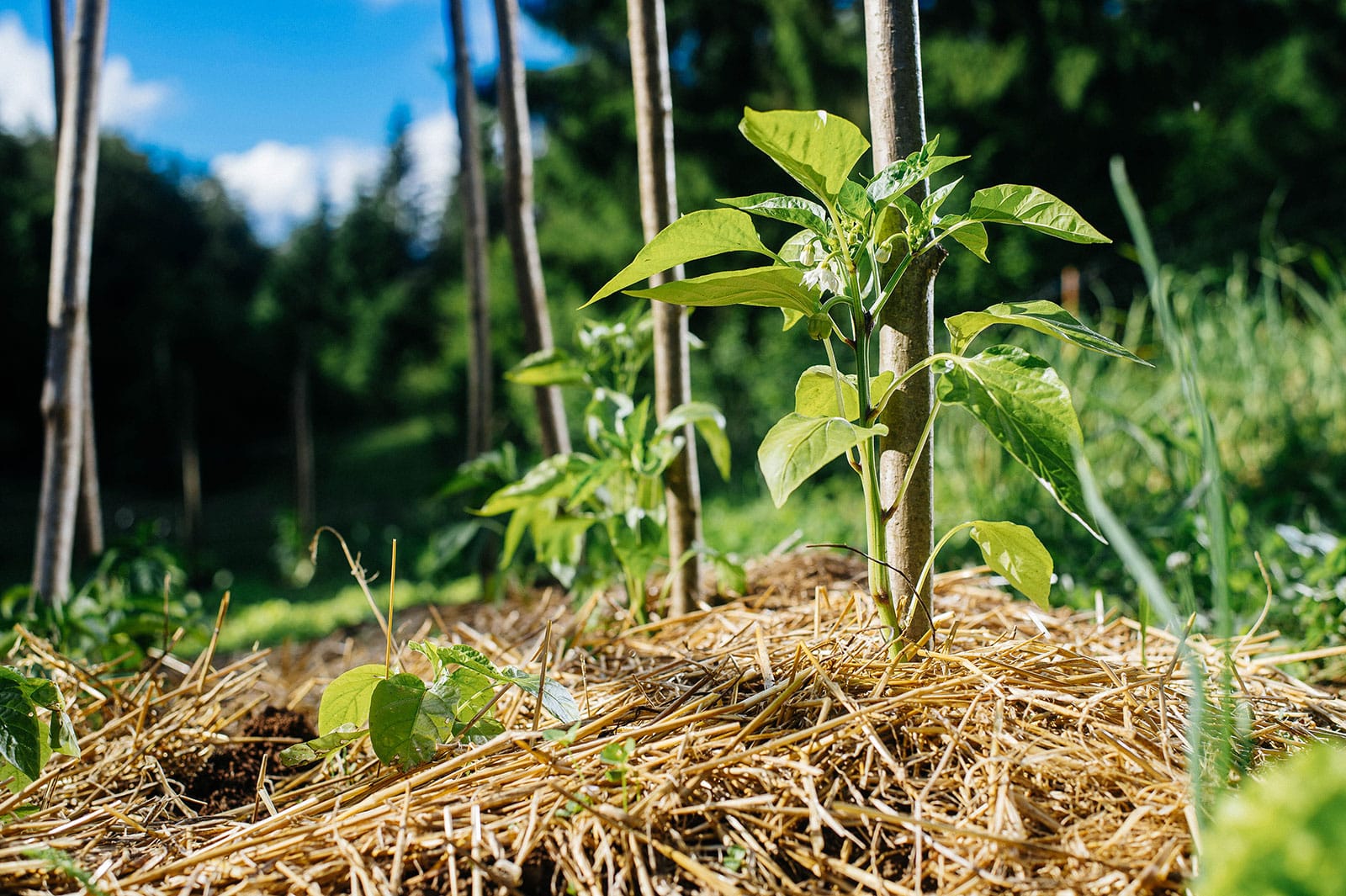
Straw is a very popular mulch option, as is (to a lesser degree) hay. Yes, there is such a thing as (mostly) weed-free hay, like 100 percent alfalfa or timothy.
Straw and hay are commonly used as a winter mulch, but are good choices for your vegetable garden in summer as well. These materials are relatively cheap, readily available, lightweight, and easy to apply—even my kids love to help me mulch with them.
When sourcing straw or hay to use in your garden, be sure to ask the supplier if it’s unsprayed. Pesticide residues in treated grasses can wreak havoc on the soil by stunting the growth of your plants.
Shredded bark
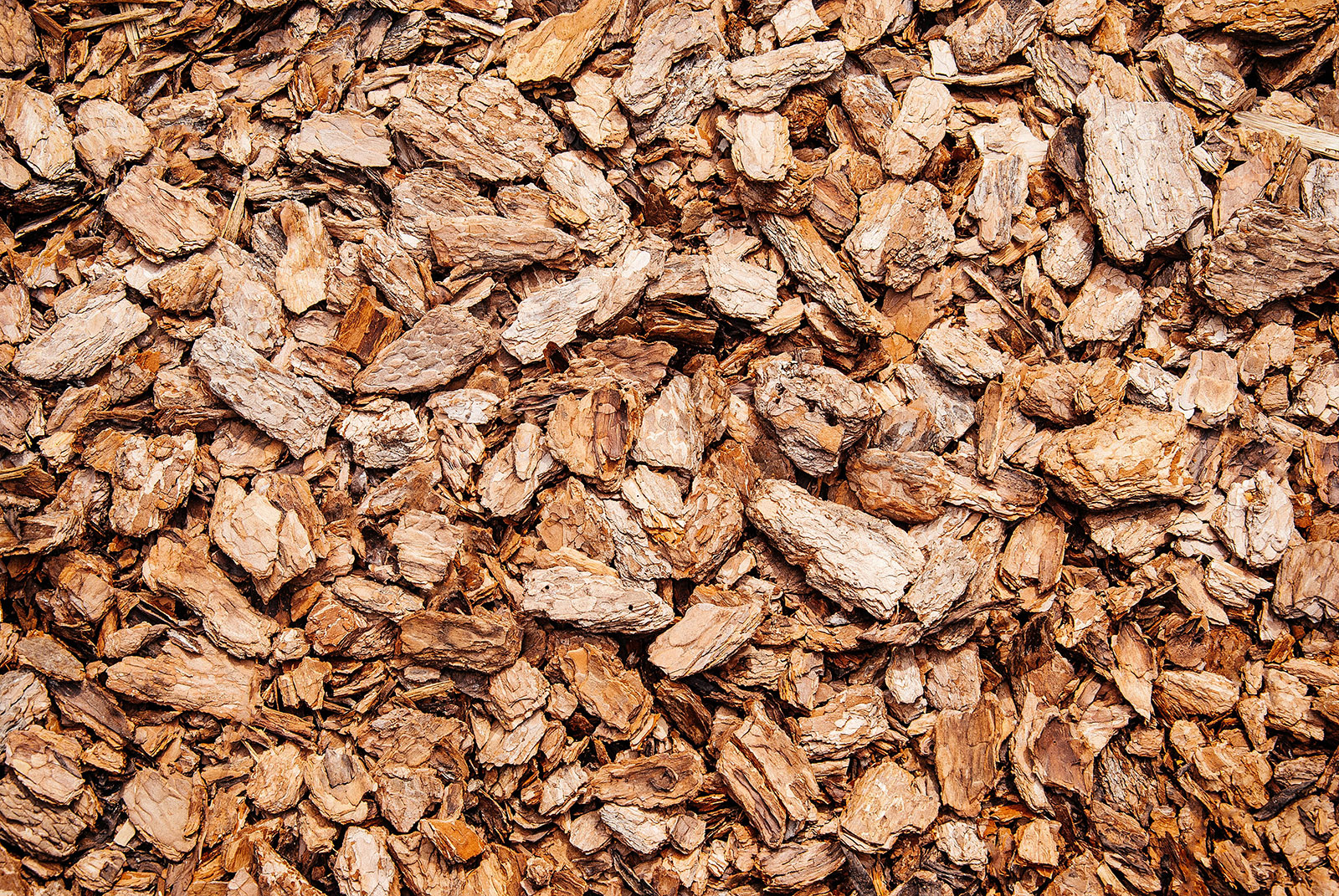
Also known as bark chips, shredded bark usually comes from the chopped-up outer bark of conifers like fir, pine, and redwood. Because different tree species have different exteriors, shredded bark can be found in various colors and textures.
This is a good choice if you want a very durable mulch that holds its shape and won’t blow away. I especially like shredded bark for defining pathways and mulching sloped areas. It’s ideal if you live in a rainy, windy, or hilly region.
Wood chips
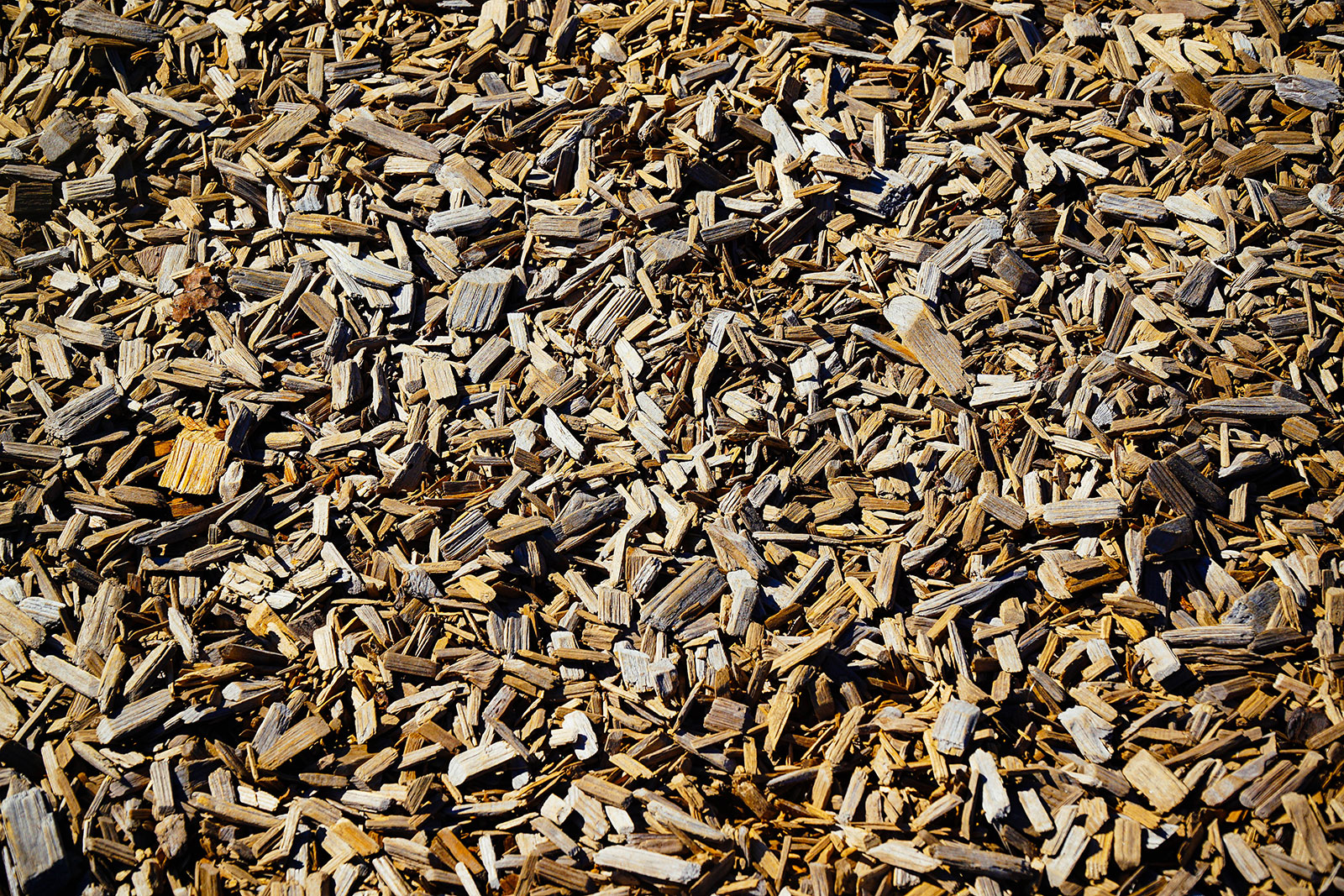
Wood chips are among the most popular types of organic garden mulch, especially for use around trees and shrubs or if you want a natural-looking walkway.
Similar to bark chips but made from the woody part of a tree, wood chips are a material you may already have access to if you have plenty of trees in your yard. When you do your annual pruning, simply feed the unwanted branches through a wood chipper and voilà, free mulch! (You can even do this with your old Christmas tree.)
If you don’t have trees or a wood chipper, you can sometimes find an arborist that will unload a mound of wood chips in your driveway for free (or a nominal fee). This can happen if the arborist just finished a tree trimming job nearby and would rather not haul their load to the local landfill or recycling facility.
So if you spot a tree trimmer working in your neighborhood, stop and ask if they have any plans for the chips. They may be relieved to have a willing taker! Wood chips obtained from tree trimming jobs aren’t the cleanest, since they’re usually mixed in with other tree debris like leaves, twigs, and pine cones. But if you’re just looking to cover some ground, it’s a great way to go.
Sawdust or wood shavings
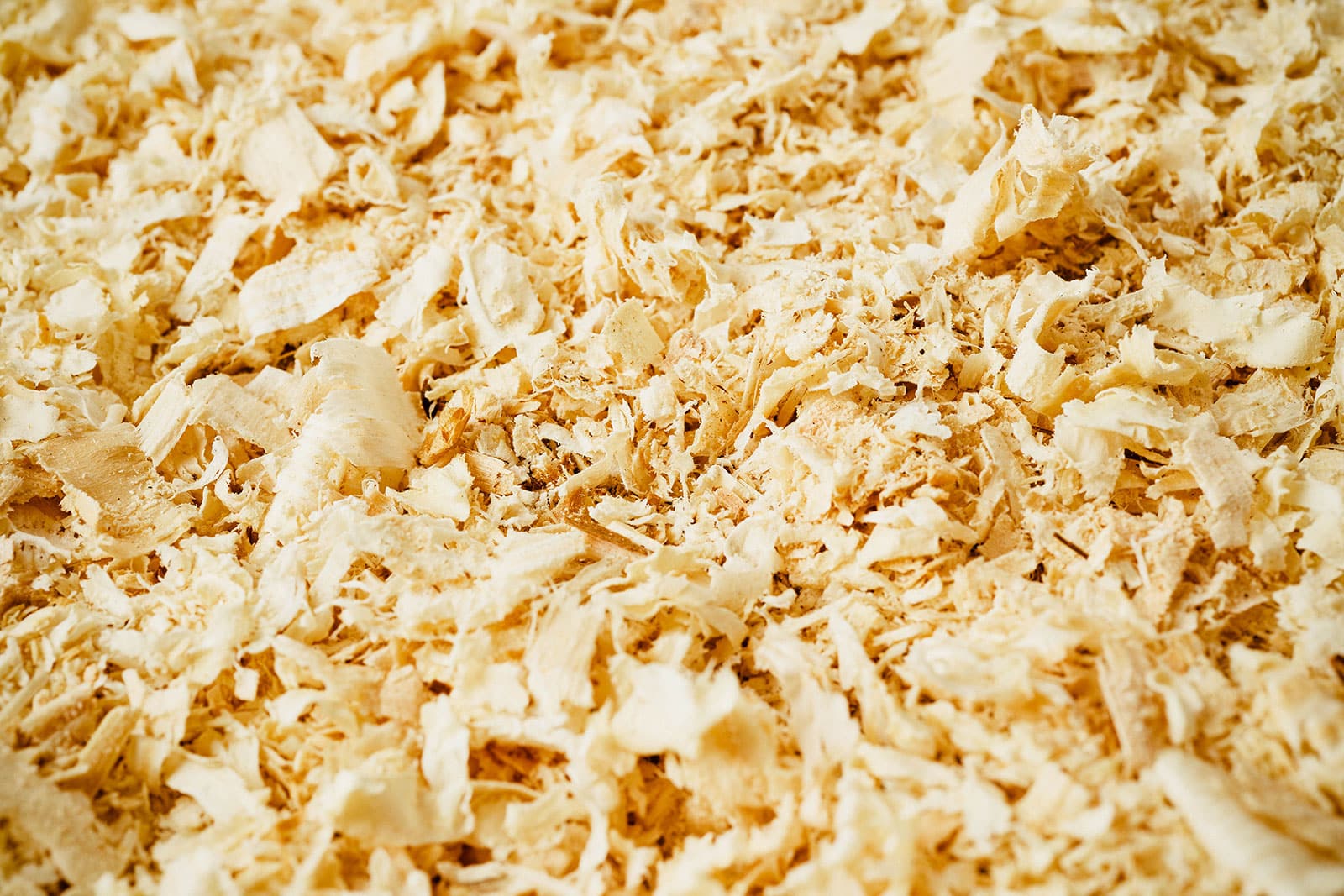
Like wood chips, sawdust and wood shavings come from trees. They’re less coarse, which makes them ideal for seedlings, small plants, and container plants. Their fine texture sometimes makes them more prone to forming a crust, however, so you might have to gently fluff the sawdust with a rake if it becomes compacted.
Contrary to popular belief, sawdust is not acidic, so it won’t have any effect on acid-loving plants like rhododendrons and azaleas (other than keeping the soil around them moist and healthy).
Pine straw
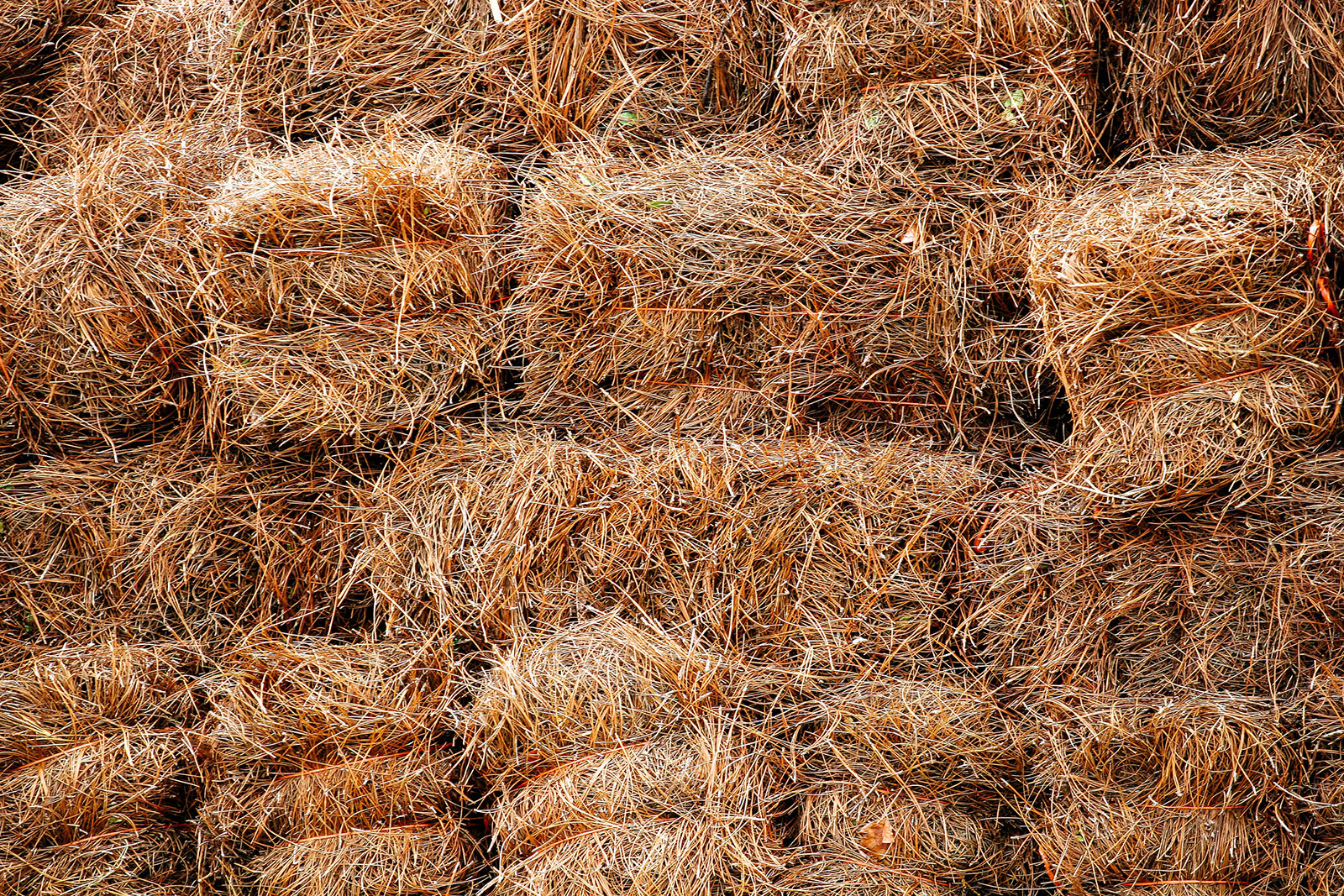
Pine straw typically refers to commercial bales of aged pine needles, but at home, it can also simply be fallen pine needles collected and used as a mulch. It’s commonly spread around as a landscape mulch to prevent soil erosion but also works great as a garden mulch.
Pine needles are lightweight, take a long time to break down, and you might already have a free source of them if you have pine trees in your yard.
This is another one of those misunderstood mulches because it’s often repeated that pine needles acidify the soil—however, they don’t.
While it’s true that pine needles are acidic when they drop (and are still somewhat fresh), they’re quickly neutralized by microbes in the ground and thus do not turn the soil acidic as they decompose.
Grass clippings
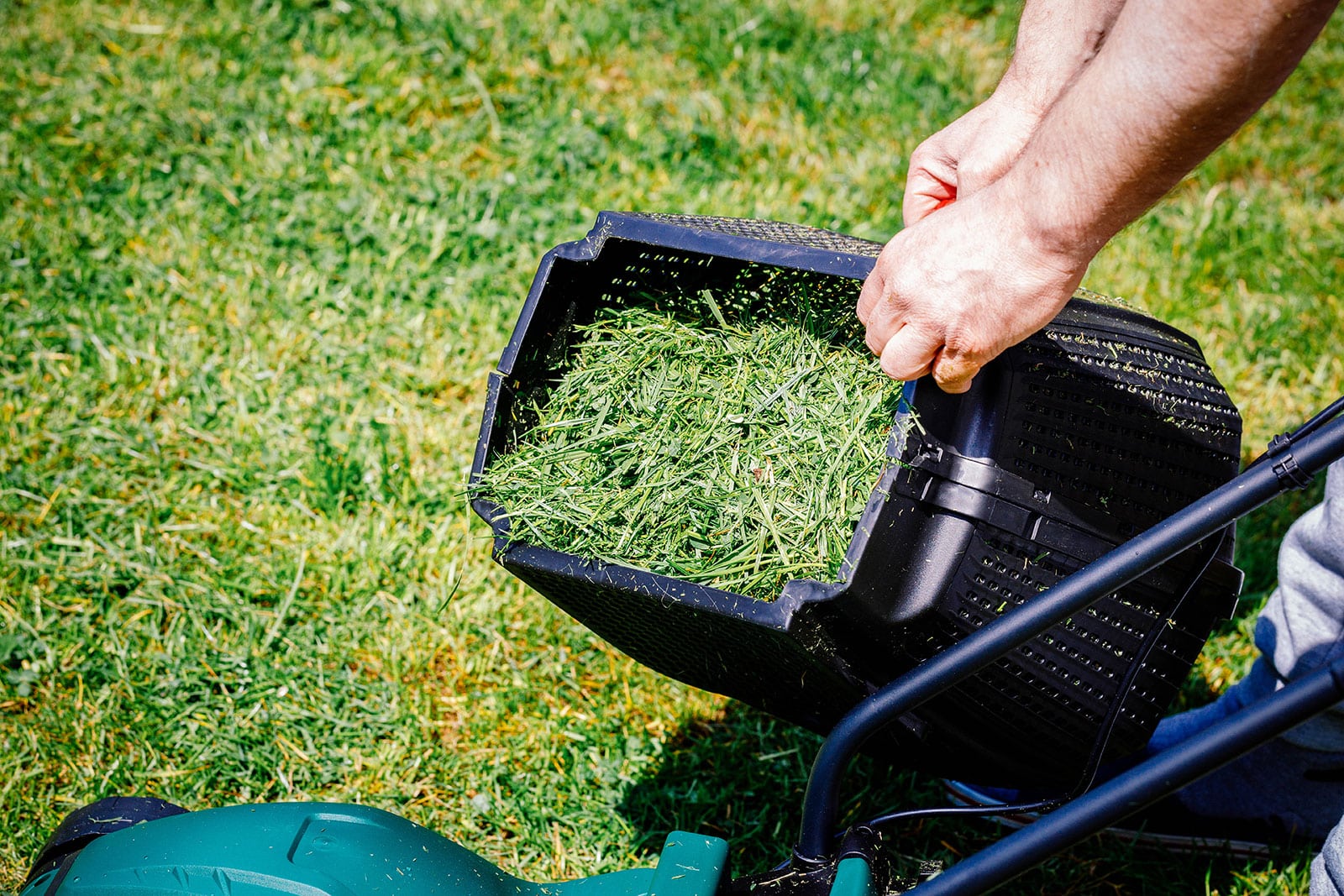
Many lawn mowers have grass catchers that collect grass clippings while you mow. Instead of discarding the material in your garbage or recycling bins, save your grass clippings to reuse elsewhere in the yard.
This is an easy source of free mulch in summer. A thin layer of grass clippings decays quickly, enriching the soil with nutrients and holding in moisture. If you don’t need more mulch for the garden, you can just spread the grass clippings over your lawn to rot in place.
Freshly cut cover crops

Growing cover crops in your fall or winter garden after the last of the veggie harvest is always a good idea. It adds nutrients to the soil and keeps the soil structure intact, which helps next year’s crops grow and produce even better!
You can try a cover crop like Austrian winter peas to give the soil a boost (and to snack on through the winter, as the shoots themselves taste like peas).
Related: How to grow fava beans as a cover crop to fertilize your soil (for free)
Once it’s time to cut back the cover crop, which is right after the first pea flowers appear, you can simply chop them all down and leave the vines in place as mulch for other plants (instead of tilling them into the soil).
Did you know?
Ground cover plants, like thyme, clovers, ice plants (a type of creeping succulent), moneywort, and even moss are also sometimes considered a type of mulch. These types of “living mulches” can be left to grow around other garden plants permanently and offer many similar benefits, like moisture retention and weed suppression.
Sheep wool
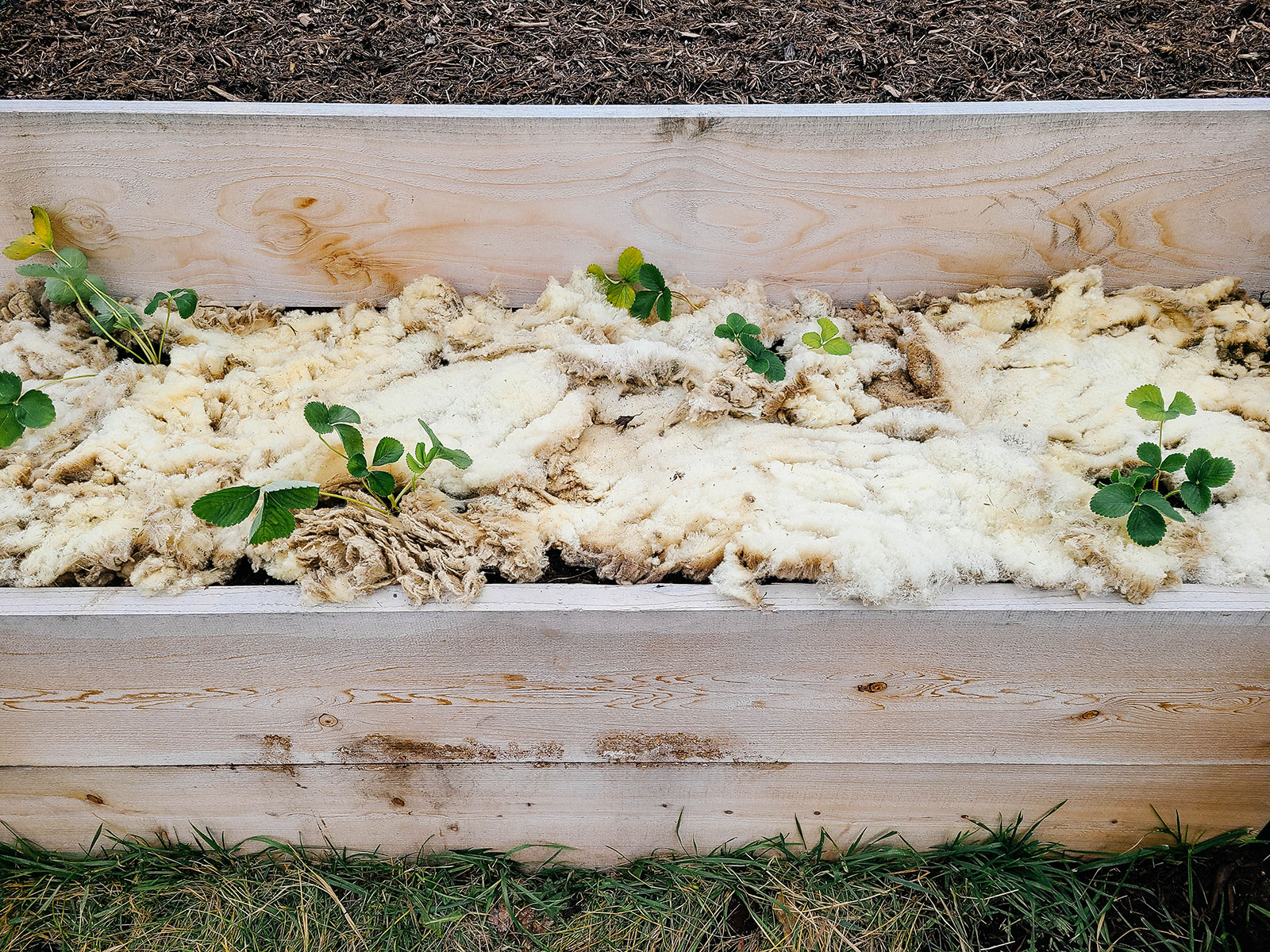
Surprise, not all organic mulches are plant-based! Sheep wool is a mulch I’ve been experimenting with for a couple of years, and I can say the results so far have been promising.
Although high-quality wool is, of course, best left to make clothes with, not all of the hair sheared from a sheep is suitable for that. For example, the wool on a sheep’s butt can be too dirty or low-quality for this purpose. So, it’s sometimes sold or given away as mulch.
If you can find it from a local farm that’s trying to offload its old wool (which is where I source mine), some advantages of sheep wool mulch include superb insulation (it’s like a warm cozy blanket for your plants!), dense fibers that truly prevent weeds from growing through, high nitrogen content, and slow decomposition.
I like using sheep wool to overwinter my strawberry beds (seen above) and to mulch young tomato and pepper plants in spring (which you can see in my post here about trellising tomatoes). It does have a bit of a “farm smell” after a good rain, but holds up really well through showers, hail, snow, and wind.
I’ve managed to reuse my sheep wool mulch for two to three seasons before it became too ratty; after that, I’ve either buried it under a new planting or added it to the compost pile to finish breaking down.
Cocoa hulls
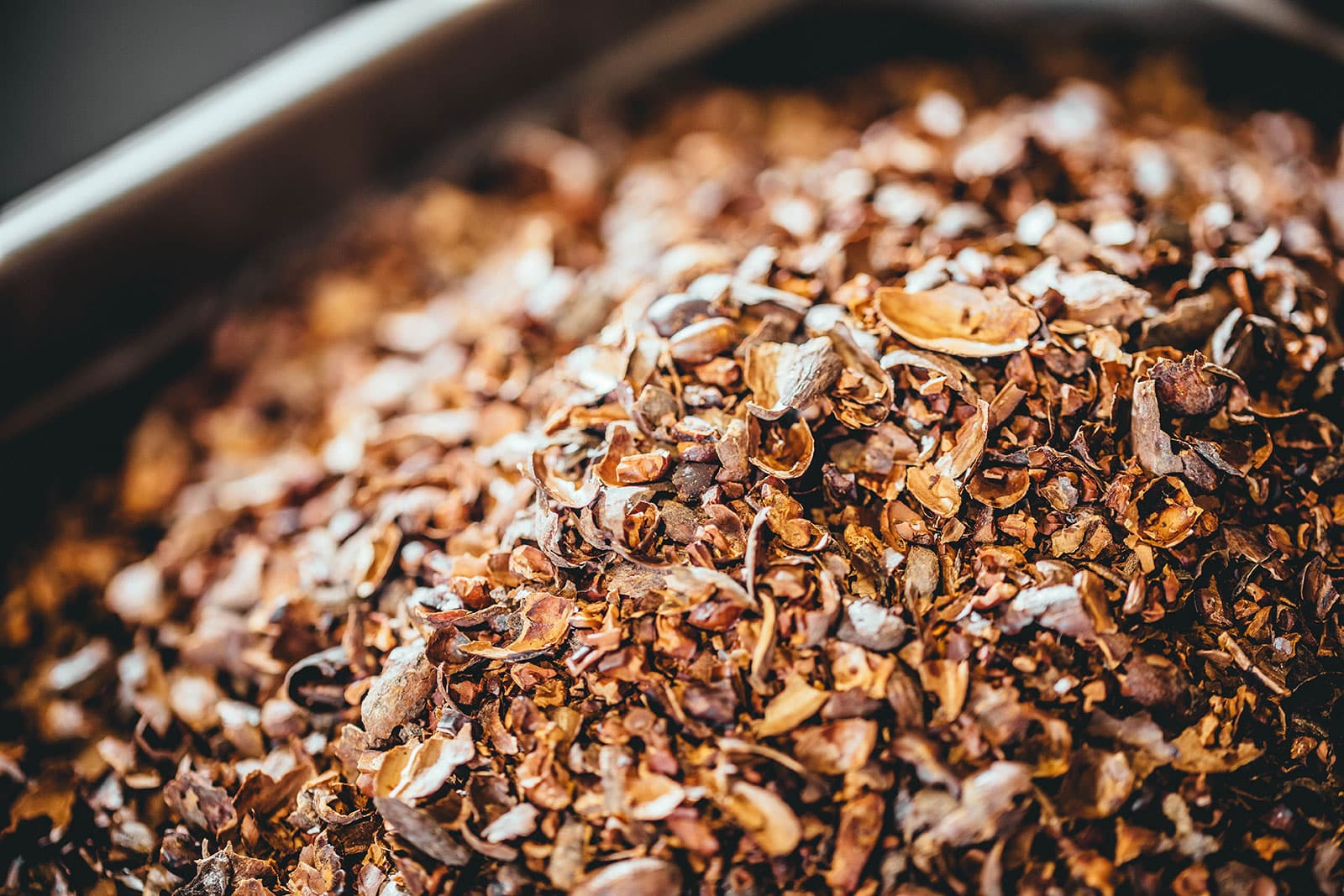
A by-product of the chocolate industry, cocoa hulls are the roasted shells of cocoa beans. This material has been gaining traction as a garden mulch; it’s sterile (due to having been roasted previously), blends well into the landscape, and does everything you want your mulch to do. Oh, and it even smells pretty yummy to boot!
Please do remember that, like chocolate itself, cocoa hulls can contain theobromine and caffeine. This is toxic to dogs and many other animals, so if your furry friend likes to chew on garden materials, you may need to use one of the other mulches on this list.
Rice hulls
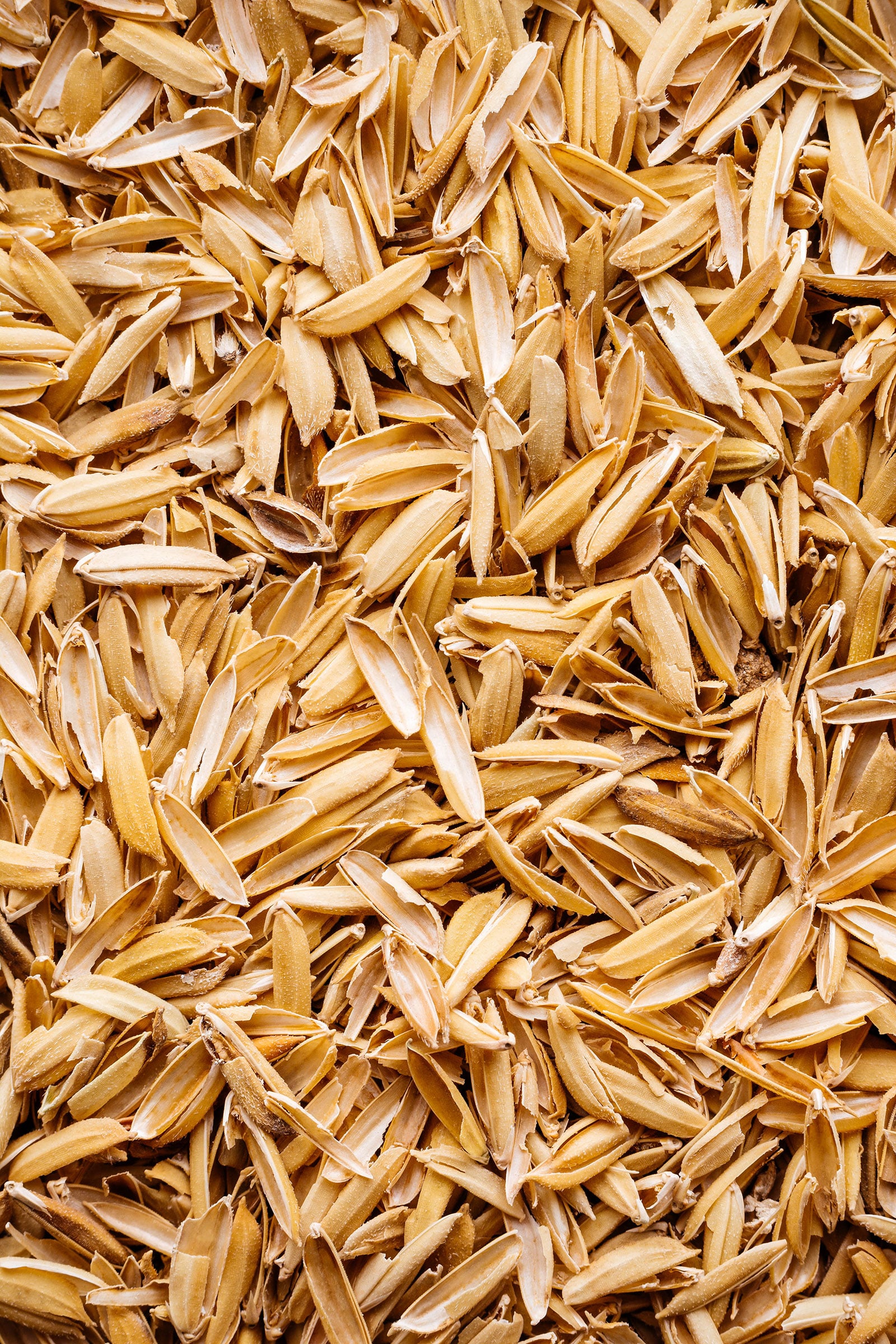
Another nice and lightweight option, rice hulls are the protective outer layers of rice seeds. They’re not really edible, so they’re removed during the processing of rice. After this, rice hulls become perfect mulching material if you want a garden mulch that offers good weed control and slow decay.
Because rice hulls are comprised largely of silica, they also amend the soil. To keep them from flying away, just mix the rice hulls with a little compost, sawdust, or other similar material before you dress the soil.
This post updated from an article that originally appeared on March 27, 2023.


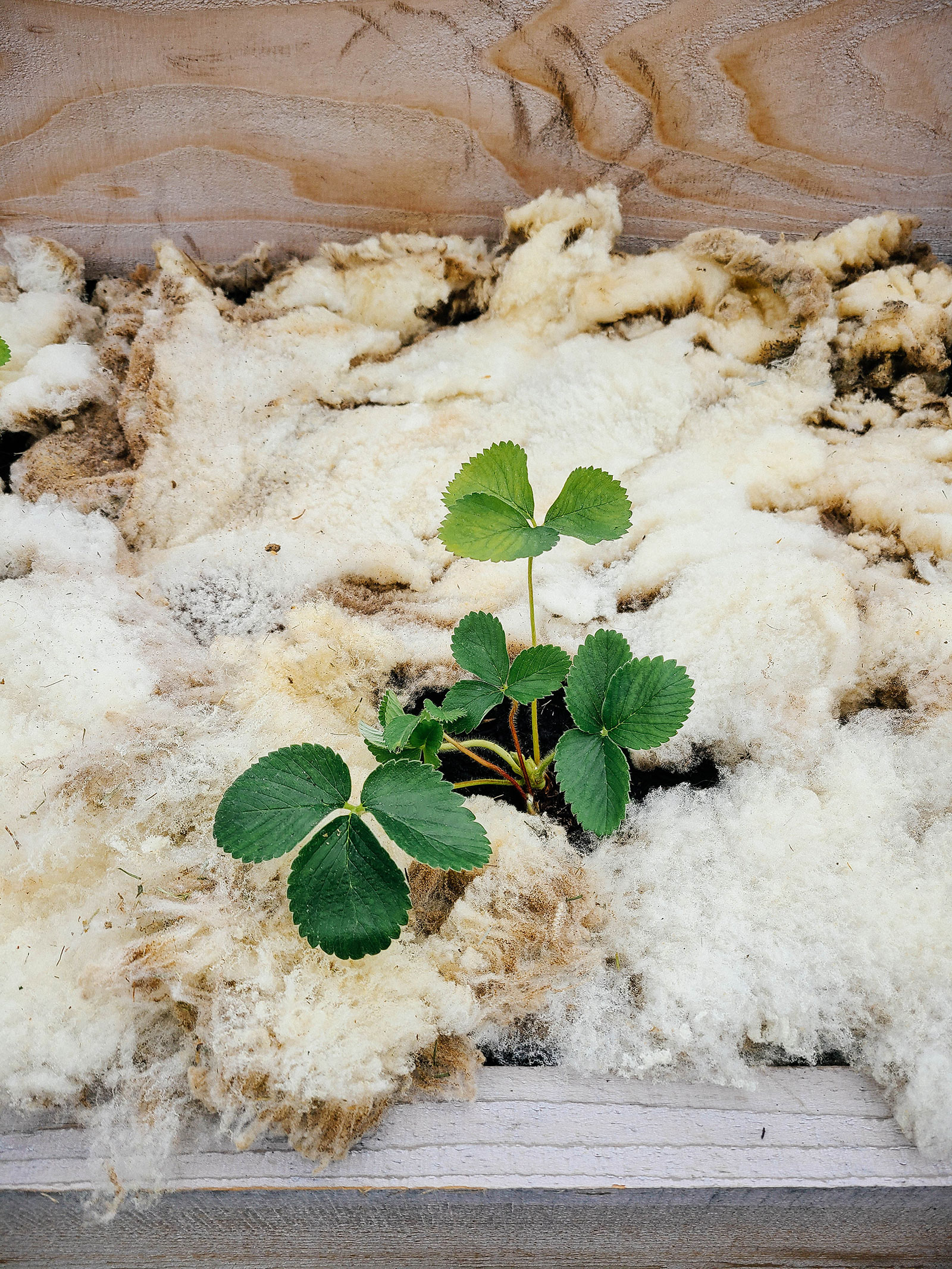













I have wood chips from tree trimming. My husband says don’t use in the vegetable garden because earwigs love to be in it. Any thoughts?
I love what you do, thank you.
Earwigs love any and all organic matter, not just wood chips. I wrote more about them here and how to prevent or get rid of them: https://gardenbetty.com/earwigs/
How about coconut hulls? I have been seeing it for sale in the big box stores.
“Your detailed explanation on seasonal planting was really helpful. Could you include more photos in future posts? Visuals really help!”
I like using stable bedding. What is available to me is wood shavings that have been trod on and made “dirty “. I get it by the truck load for the minimal cost of loading.
I have an overabundance of Creeping Charlie (Glechoma hederacea) and it is not ever going away. It’s a pretty groundcover, the pollinators love it when it’s in bloom, and I know it has medicinal value. I’m wondering if Creeping Charlie can live alongside other plants in the garden, or if it robs too many nutrients from the soil. What types of garden vegetables might coexist decently with Creeping Charlie? (I think this would merit a complete article!)
Do you think dog fur would work? I’ve been giving my dogs’ fur to my niece for felting. Maybe if we felt sheets of it and layer it?
Nice treatment! Living mulches include ‘White Dutch’ clover, a la Fukuoka’s no till system in The One Straw Revolution. I thought about substituting perennial peanut for the clover when we lived in Florida, but never undertook the project. (For one thing, our main growing area was flooded every several years, which would necessitate getting it established repeatedly. Because PP is reproduced clonally, it would be a major undertaking and expense.)
DOG FUR. My daughter uses dog fur in the hope of repelling pests such as deer and woodchucks. Hair has a slow breakdown time, depending on the biological activity of your soil. My database of analyses of organic-compatible soil amendments rates it as 14% nitrogen (roughly the same as feathers). Dog grooming enterprises ought to be happy to give pet hair/fur away.
Hi Linda,
I recently discovered your site and absolutely love your articles and your simple down to earth way of expressing your ideas. I have a question for you if you have a minute. I have a family of 60 adorable furry alpacas 🙂 Sheering season is coming soon. Of course I process the good fibre into comfy wearables but I always have a lot of unusable fibre. I was thinking of mixing some alpaca fibre with some well composted alpaca manure (alpaca beans mixed with hay and wood pellet bedding) to fill my garden pots. I’m thinking the fibre might have the effect of absorbing moisture and releasing it later when the plants may need it. This would be instead of using peat moss or other additives. I also have access to lots of hay waste and pine needles from our trees. I have 60L pots that I want to use for indereminate tomatoes and bell peppers. What do you think a good mix would be of all those free ressources I have? Are any additives needed?
Not sure alpaca fibre is a good idea. It typically contains oils that shed water to keep the animal warm. I would stick with plant matter and the composted manure, and use the leftover fibre for small pillows, pin cushions, stuffed animals, etc.
Please remember to mention leaving neg a number of whole leaves around plant bases and tree trunks to overwinter insects and caterpillars needed in the ecosystem. Also to leave some bare ground in a sunny location where native bee populations burrow. With honey bees in decline it’s important to support native pollinator bee populations!.
Where can a get a print out of this great mulch article?
I hadn’t hear of rice hulls as a mulch – I’ve been using them as a perlite substitute in potting mix. They seem to work pretty well for that.
Hello. Where does one find a large amount of rice hulls? Thanks, Karen
Farm supply stores will be your best option for large sacks of rice hulls. They’re often sold as soil amendment (and an alternative to perlite or vermiculite).